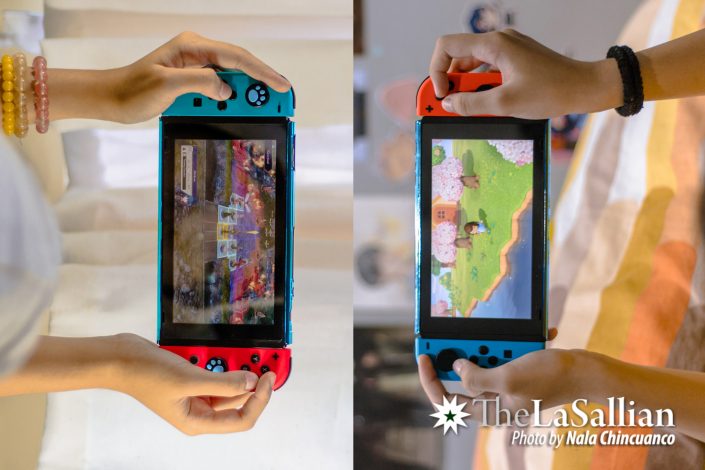My very first console came in the form of the Nintendo Game Boy Advance SP—cobalt blue, compact and portable, with a screen around double the size as that of a digital camera. It felt unreal at first, switching it on for the first time and seeing the graphics come to life of whichever game was loaded in the device. Beyond the storylines of the Pokémon anime, past the tales of Quidditch from Harry Potter, and arching across the arcade experience of playing Mortal Kombat, exploring these worlds’ respective versions in a handheld game console felt unique and a bit more personal. Drawing me further into playing these games, the experience that the console gave was immersive but not restrictive of interaction. Entertainment and satisfaction were relative to the game and the player, but it felt as if I could never go bored with what the duo could offer.
Eventually I found myself replaying games over and over again. I purchased newer ones but the experience remained the same; it did not improve. Donkey Kong swinging from vine to vine felt all too similar to Power Rangers: Dino Thunder characters going around the city, jumping from one building to another to defeat Mesogog’s evil minions. Back then, I thought it was mainly my liking and interest toward the same gameplay and mechanics, but it was more than that. The capability of the console, its functions, and the games’ storylines were patterned to do similar tasks and actions, and to fulfill resembling quests. It grew repetitive, leading to a hiatus.
But just last January, I got myself a hold of the Nintendo Switch, ending my 12-year console gaming drought.
The encounter was given: it was fresh, overdue, and nothing short of enthralling. With the console’s upgrades in the graphics, ergonomic design and form, audio, and even the more universal charging port—USB C—the novice gamer in me was definitely impressed and captivated, despite being aware of changes that have become the standard for gaming in recent years such as internet connectivity, touch screens, projectable gameplay, downloadable content, and open-world gaming.
The games I grew up knowing are still playable in the console such as Pokémon, Mario Kart, and Legend of Zelda; their familiarity did not only make me remember the times I wished I could play them again, but they also reminded me of the occasions when I had hoped for the GameBoy versions to have better storytelling, more thought out characters, expanded gameplay, and enhanced entertainment. Suffice to say, the Switch games presented the answer to those wishes, going beyond my expectations and setting the benchmark high.
Beyond this, however, lay a curious case in point: how did the Switch lure me back into gaming?

The Nintendo Switch continues to dominate the console and gaming market even three years after its first release, proving the sensation it has brought to the gaming community. In spite of that, its selling point was not the console’s processing speed; rather, it focused on how it would look appealing to the public, especially to new users and to those who haven’t played in a long while—including me.
The Switch is a perfect example of a middle ground—or bargain, rather—between good design and good performance. Nintendo did not put too much work into producing the most powerful console in terms of its graphics and processing power. Instead, it focused on a major factor it intends to promote: aesthetics.
True enough, Nintendo produced a portable and somewhat customizable crossover of the Wii U and the Nintendo 3DS—emphasizing the console’s ability to provide its users with fun and enjoyable experiences without being bogged down by the lack of electrical sources to power the device or a three-kilogram weight for the component. The Switch would not exist in its current form if Nintendo only prioritized and focused on racking up the console’s power. It was never meant to be the super console with the highest-end specifications and technology; it was simply meant to be an upgrade from its earlier handheld consoles—and a fierce underdog against more powerful gaming devices.
A good analogy to establish these points would be the Xbox One. Although it was released back in 2013, it is still more powerful than the 2019 Nintendo Switch in terms of overall performance. But to expect all of the power of an 8.4-pound device to be downsized to fit into a portable console weighing less than a pound sounds too much of a problem. After all, the goal of innovation is to not make things harder for both the manufacturers or developers and the users of the product; it is the other way around.
Could a console be much better? Definitely. But that would not be the Switch we know. Despite this, it was able to fulfill what we needed most and expected: it entertained us—just like any console would.
While newer and better gaming devices will probably be introduced sooner or later, the Switch has undoubtedly allowed us to play anywhere, anytime, and with anyone, serving as our best handheld portal to games with incredible stories, overwhelming graphics, and relatable characters.
